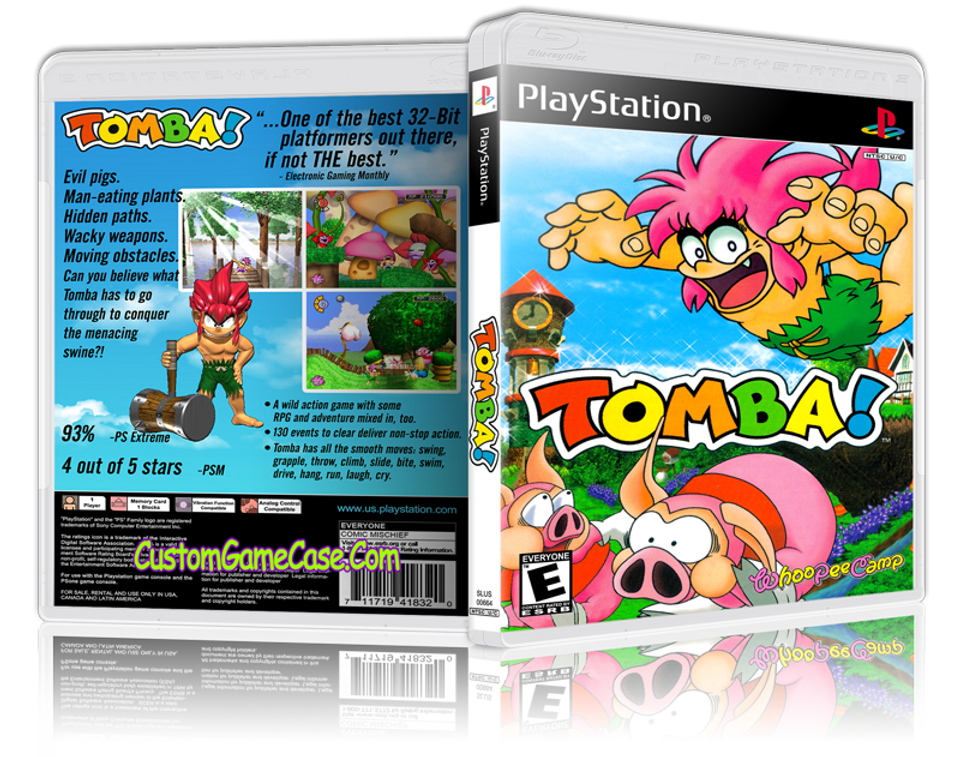

There are also a handful of towns, which changes the view to an overhead perspective, allowing him to explore more freely. It takes a little while to adjust to the controls, especially since Tomba arches his back during his jumping animation, and it feels a little floaty compared to other 2D platformers. Tomba carries a weapon, which at the beginning can merely stun enemies, so his main method of attack is to jump onto something, bite their necks, bounce around a bit and then throw them around. At certain points, you can climb up or leap off walls, switching to another horizontal plane, though these locations are not always clearly marked. Tomba! is a 2.5D platformer – the characters are sprites, but the backgrounds are polygonal. This frees the area from its curse and opens up new parts of the game. So basically, Tomba enters a cursed area, finds the evil pig bag, hunts for the portal to the evil pig’s lair, and then captures him. The only way to break the curse is to find a pig bag, which is hidden in each of the cursed lands, and use it to capture the evil pig. Since the bracelet is the only remaining memory of his grandfather, who had raised him from birth, Tomba sets out to hunt down the tribe of pigs and get back what is rightfully his.įairly early into the adventure, Tomba learns that the reason the pigs collect gold is that it fuels their magic, and that their seven leaders have cast a curse over the continent. In the beginning of the game, Tomba’s golden bracelet is stolen by a tribe of humanoid pigs called “The Evil Swine”. Tomba lives “on a certain continent which for some reason has never been marked on any map”. The name was changed to Tombi! in European countries, probably because “tomba” is Italian for “grave”, which would change the feel of the game somewhat. They live in trees and are excellent fishermen, facts which are referenced in the opening cutscene. The player takes control of the titular Tomba, a pink haired feral child arguably based on “kijimuna”, small wood sprites in Japanese mythology with crazy hair and a playful streak. This is a unfortunate turn of events, since the Tomba games are remarkably creative titles, blending a platformer with RPG elements. After working at Capcom for thirteen years, he left the company to form his own studio, Whoopee Camp, to which the only contributions to the gaming world were the two Tomba games.

A graduate of Osaka Designers’ College, Fujiwara was recruited by Capcom as a designer and is credited as the creator of the Ghosts ‘n Goblins franchise, as well as producing several Mega Man titles. Tokuro Fujiwara was one of Capcom’s most respected (and feared) employees.


 0 kommentar(er)
0 kommentar(er)
